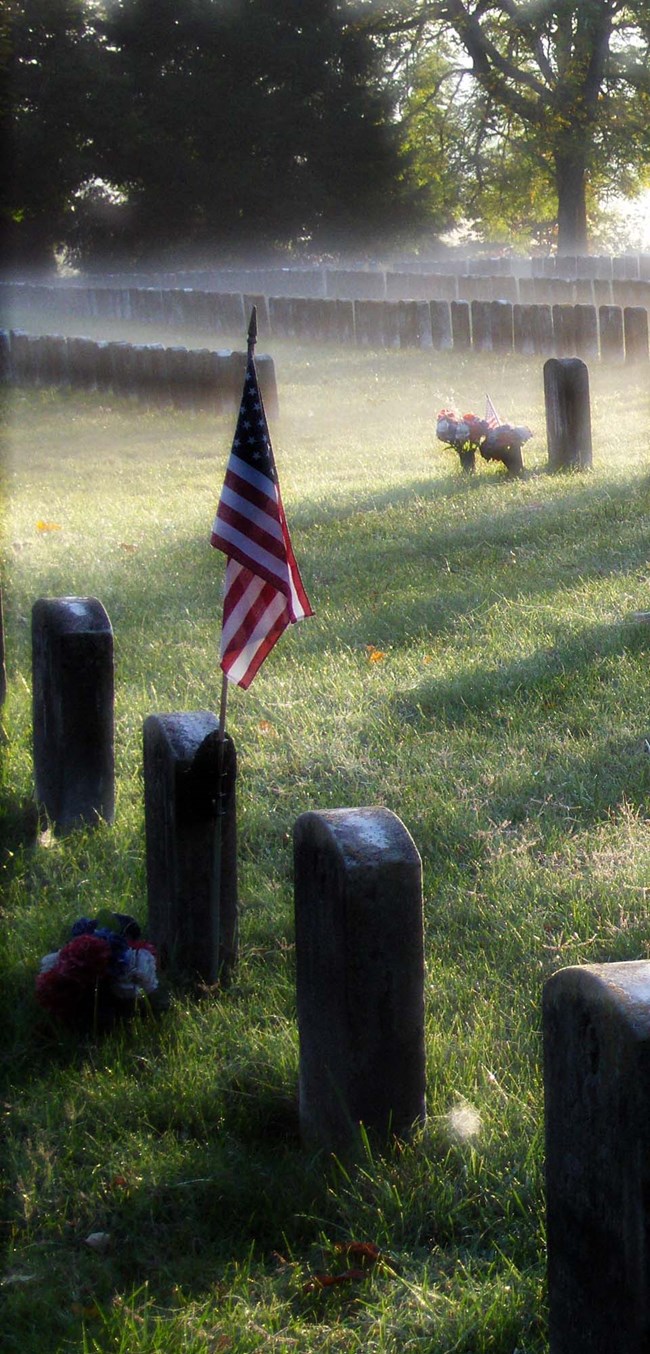
NPS Antietam National Cemetery, dedicated in 1867, is the final resting place for Union dead from the Civil War and service men and women from other conflicts. This designed landscape is a deliberate creation of the American response to mourning and remembrance in the 19th Century. The cemetery has been identified as a fundamental resource at the battlefield and it continues to serve as a memorial to honor military sacrifice. The Battle of Antietam occurred on September 17, 1862 and still is the single bloodiest day in American History. At the end of the twelve hour battle, more than 23,000 men were killed, wounded, or listed as missing. Approximately 4,000 soldiers were killed that day, and in the weeks that followed, many more died of wounds or disease. The peaceful village of Sharpsburg turned into a vast hospital and burial ground extending for miles in all directions. Union soldiers were in charge of burial details after the battle. Graves ranged from single burials to long, shallow trenches accommodating hundreds of bodies. By March of 1864, no effort had been made to find a suitable final resting place for those buried in the fields surrounding Sharpsburg. Many graves had become exposed; something needed to be done. The State of Maryland purchased the land for the cemetery in 1865 and the work began to locate the temporary graves of the soldiers on the battlefield as well as other sites throughout the state and re-inter them in the new cemetery. On September 17, 1867, on the fifth anniversary of the battle, the cemetery was ready for the dedication ceremonies. President Andrew Johnson, the Governor of Maryland and other dignitaries attended the event. Today, Antietam National Cemetery is one of the 130 cemeteries of the National Cemetery System, a system that began during the Civil War. There are 4,776 Union remains (1,836 or 38% are unknown) buried here from the Battle of Antietam, South Mountain, Monocacy, and other actions in Maryland. In addition, more than 250 post Civil War dead are also buried here. Servicemen and women from the Spanish-American War, World War I and II, and the Korean War were buried here until the cemetery closed in 1953. Recently an exception to the closure was made for the burial of Keedysville, MD resident Patrick Howard Roy, United States Navy. Fireman Roy was killed during the attack on the USS Cole and was buried in the cemetery on October 29, 2000. Full Battle Anniversary Schedule for 2017 Visit this page for more information on the Antietam National Cemetery. |
Last updated: July 27, 2018
